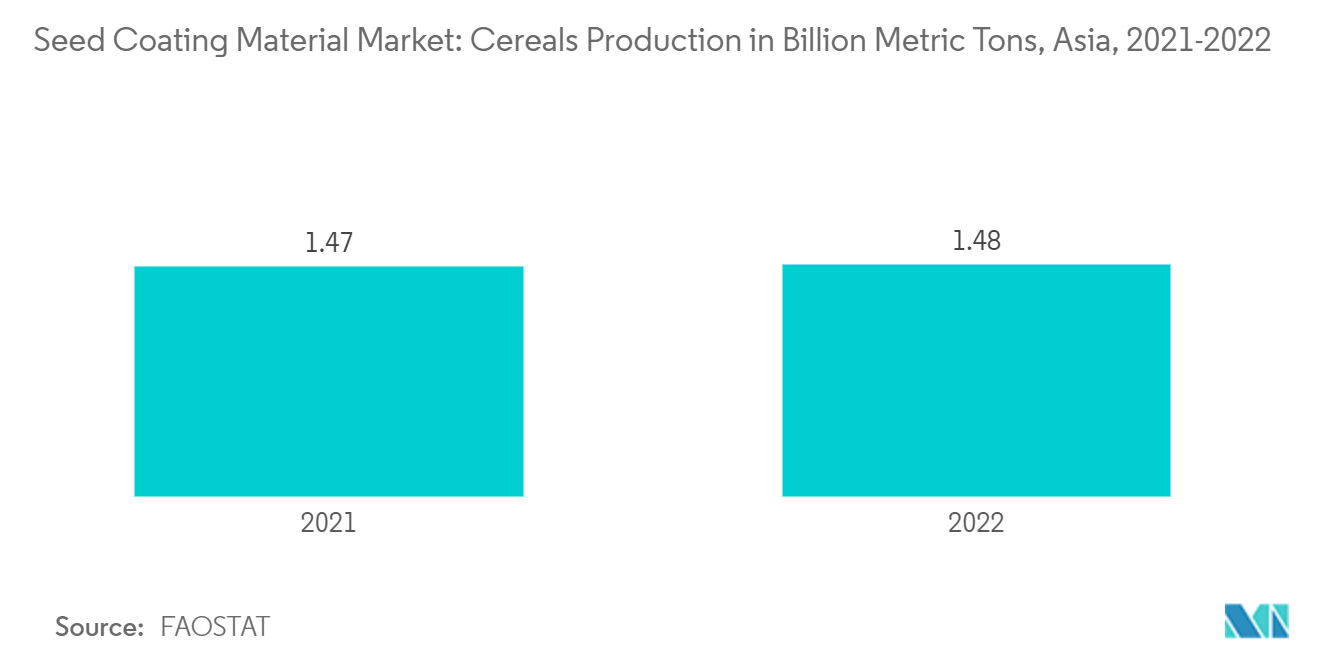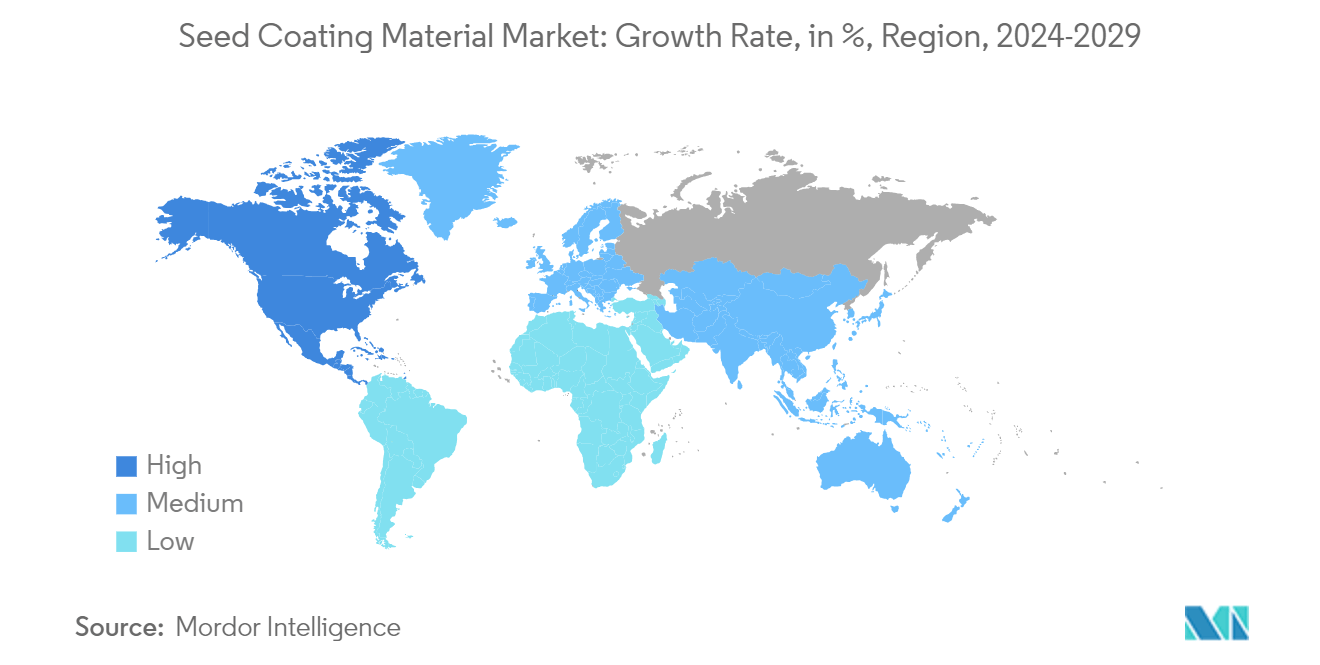Market Trends of Seed Coating Material Industry
Grain and Cereal Market is Growing By Crop Type
- The grains and cereals seed coating material market is experiencing robust growth, driven by heightened agricultural productivity demands, the embrace of advanced seed treatment technologies, and a growing commitment to sustainable farming practices.
- With the global population on the rise, the demand for staple crops such as wheat, rice, corn, barley, and oats continues to surge. These grains are pivotal to food security, especially in regions like Asia, Africa, and Latin America. Seed coating materials bolster seed performance, enhancing germination rates and, consequently, yields and crop quality. This has led to a global uptick in their usage by growers, subsequently boosting overall cereal production. For instance, FAOSTAT reported that Asia's cereal production rose from 1.47 billion metric tons in 2021 to 1.48 billion metric tons in 2022.
- Moreover, with limited arable land, farmers face mounting pressure to boost food production. Seed coatings play a crucial role in maximizing crop potential, ensuring healthier and more uniform establishment even in suboptimal soil conditions. The rise of precision farming technologies further amplifies the benefits of seed coatings, promoting uniform plant emergence and enhanced crop management. These advancements, when paired with coated seeds, promise improved plant health and nutrient efficiency, leading to heightened productivity.
- Additionally, grains and cereals face heightened vulnerabilities due to climate change, be it erratic rainfall, extreme temperatures, or soil degradation. In response, seed coatings are being innovatively developed to bolster seeds against these challenges. By enhancing drought tolerance, nutrient uptake, and temperature resilience, these advancements are poised to drive segment growth in the coming years.

North America Dominates the Market
- Seed coating effectively enhances germination and shields seeds from pests. High-value crops, including wheat, cotton, and hybrid vegetables, receive these protective coatings. In North America, as the acreage for these crops expands, so does the market for seed coating materials. For instance, the area harvested for wheat in North America was 24,231,110 hectares in 2021 which increased and reached 24,440,300 hectares in 2022, as per FAOSTAT.
- In North America, the United States stands out as a dominant player in the seed coating market. This is attributed to regulations mandating the coloring of treated seeds and a burgeoning demand for higher yields. Furthermore, factors such as expanding farm sizes, reduced crop rotation, and heightened awareness of bioproducts significantly fuel the demand for seed coating materials in the United States.
- Moreover, corn ranks among the top crops cultivated in the United States, with an increasing percentage of treated seeds using seed-coating materials. While traditional coatings often incorporate chemicals like copper compounds and antibiotics, there's a notable shift towards biologically-based coatings. These biological coatings prioritize soil microbiome preservation and align with organic farming practices. Given these trends, the market is poised for growth in the coming years.


